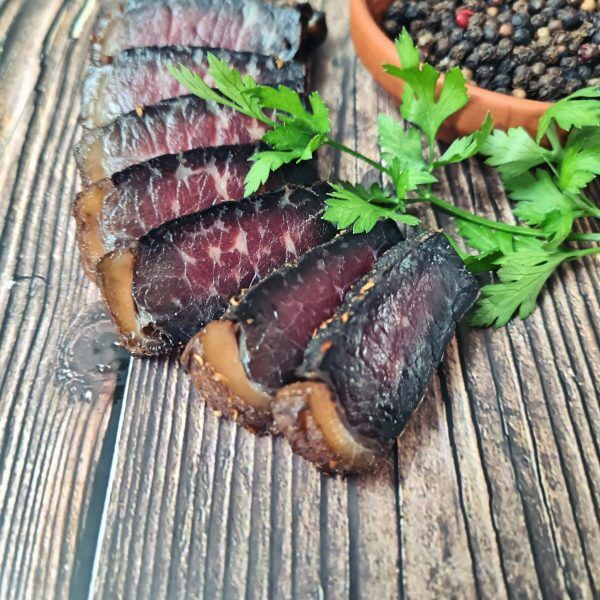Meat preservation as a survival technique dates back to ancient times. Indigenous peoples of Southern Africa, such as the Khoikhoi, preserved meat by slicing it into strips, curing it with salt, and hanging it up to dry. European seafarers preserved meat for their long journeys by curing meat in salt or brine. European settlers (Dutch, German, French) who arrived in southern Africa in the early 17th century used vinegar in the curing process, as well as saltpetre (potassium nitrate).
The potassium nitrate in saltpetre kills Clostridium botulinum, the deadly bacterium that causes botulism while the acidity of the vinegar inhibits its growth. According to the World Health Organisation, C. botulinum will not grow in acidic conditions (pH less than 4.6), therefore the toxin will not be formed in acidic foods. The antimicrobial properties of certain spices have also been drawn upon since ancient times. The spices introduced to biltong by the Dutch include pepper,coriander and cloves.
The need for food preservation in the new colony was pressing. Building up herds of livestock took a long time, but with game in abundance in South Africa, traditional methods were called upon to preserve the meat of large African animals such as the eland in a warm climate. Iceboxes and refrigerators had not been invented yet.
Biltong as it is today evolved from the dried meat carried by the wagon-travelling Voortrekkers, who needed stocks of durable food as they migrated from the Cape Colony north and north-eastward (away from British rule) into the interior of Southern Africa during the Great Trek. The meat was preserved and hung to be dried for a fortnight during the colder winter, with the cold temperatures aiding to further inhibit bacterial and fungal growth. Once suitably dried, the biltong was ready for packing in cloth bags, which allow air circulation to prevent mould.We only use prime cuts of British, Irish & Scottish silverside cuts of beef, air dried in a specially made dryer.Biltong is similar to Beef jerky however it is much tastier!
FOOD ALLERGENS AND INTOLERANCES
Full ingredients list available upon request
Our Biltong Spices may contain: MILK, EGG, SOY, WHEAT GLUTEN, CELERY.

Reviews
There are no reviews yet.